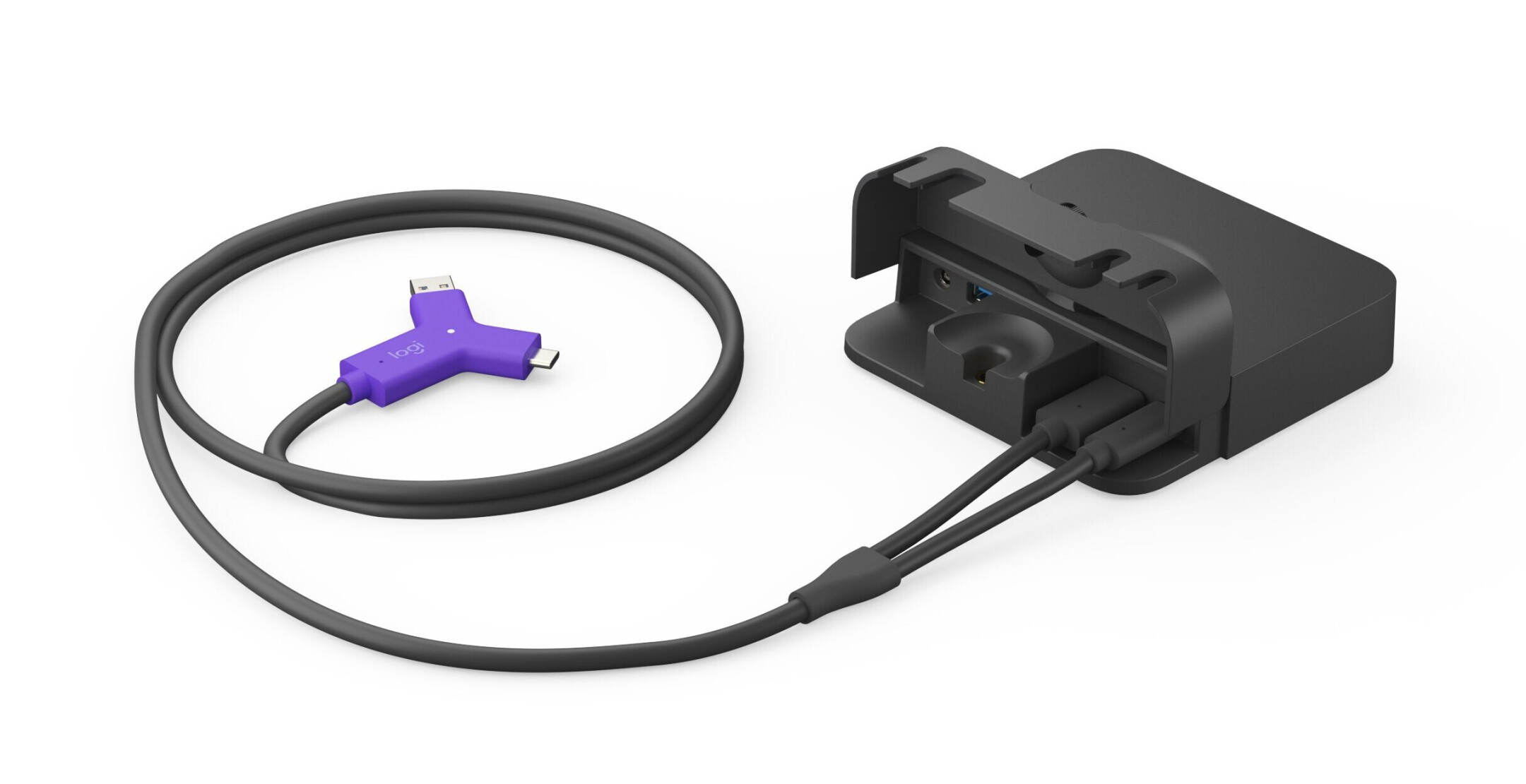























£718.32*


Product information
ANY MEETING, EVERY ROOM
With an innovative design that maximizes compatibility and incorporates DisplayLink® Plug-and-Display technology, Logitech Swytch offers a one-cable laptop link to a room’s conference camera and display, making it easy for teams to meet, present, and stream over any service.
THE FLEXIBLE ROOM SOLUTION
With Swytch, you can deploy video conferencing room solutions from providers like Microsoft or Zoom, while also allowing people to use meeting rooms with other video services.
SAY YES TO EASY
To join or host a video meeting, simply plug the iconic Swytch Connector into any laptop with a USB 3.0 or higher Type A or Type C port. No dongles, no splitters, no HDMI required.
SMART TOPOLOGY
It’s easy to deploy Swytch in rooms with USB conference cameras. Just connect the Swytch Hub to the meeting room equipment and place the Swytch Connector within easy reach.
SWYTCH + MEETUP
With Swytch in focus and huddle rooms, users can meet face-to-face with customers, vendors, and other external hosts on their preferred video conferencing service.
SWYTCH + RALLY
With Swytch in medium and large rooms, the whole team can join webinars, take online classes, and engage face-to-face with customers and partners on external services.
EVERYTHING IN ITS PLACE
Swytch integrates beautifully with your meeting rooms. Keep the tabletop clean and organized with the included magnetic dock, or route the Swytch Connector through an existing cable well. Either way, robust cable retention keeps connections tight.
TURNS LAPTOPS INTO ROOM SOLUTIONS
Thanks to hidden cabling and a convenient magnetic dock, Swytch keeps every room tidy and organized, even those without dedicated computers. A single connection and straightforward user experience make it easy for anyone to use their personal laptop for team collaboration.
POWER DELIVERY
Never run out of power when hosting a video meeting: Swytch provides 60 watts of power to laptops that charge via USB-C.
Plug and Display
Thanks to DisplayLink Plug-and-Display technology, a single connection is all you need for both USB devices and an HDMI display.
FULL MOTION VIDEO + AUDIO
Display movies from a laptop on the room’s display and speakers, and share full-motion video and audio into online meetings.*
* Works with video conferencing services that support content sharing with audio
WORKS WITH MOST LAPTOPS
Featuring both USB Type A and Type C connectors, Swytch works with Chromebooks and Windows® and Mac laptops with USB 3.0.
REMOTE MANAGEMENT
Monitor and manage Swytch, MeetUp, Rally, and other meeting room devices with Logitech Sync.
Technical data
| Name | Logitech Swytch - Conference room Dock |
|---|---|
| Article number | 1000014047 |
| GTIN/EAN | 5099206092181 |
| Manufacturer SKU | 952-000010 |
| Model name | Swytch |
| Brand | Logitech |
| Product Type | Cable |
| Inputs | 2x USB-A , 2x USB-C |
| Outputs | 2x HDMI |
| Features | Anti theft , Cable management |
| Product width | 16.4 cm |
| Product height | 2.74 cm |
| Product depth | 9 cm |
| Colour | Black |
| Condition | New |
| Warranty | 24 Month |
| Warranty type | Bringin service Service and support information |
Downloads
Product safety
| Company |
|---|
| Logitech |
| EPFL - Quartier de l'Innovation, Daniel Borel Innovation Center |
| 1015 Lausanne |
| Switzerland |
| info@logitechg.de |



